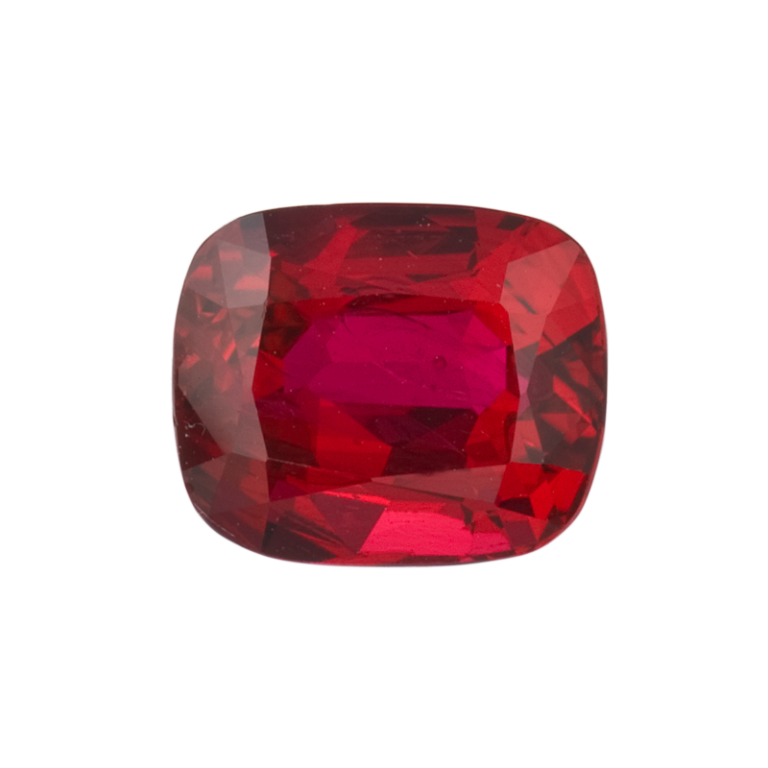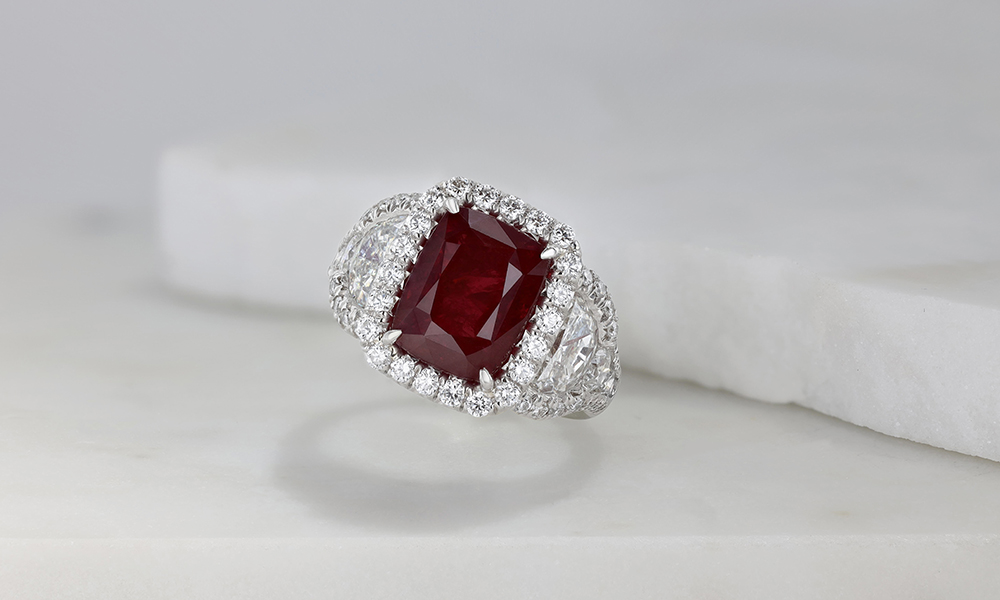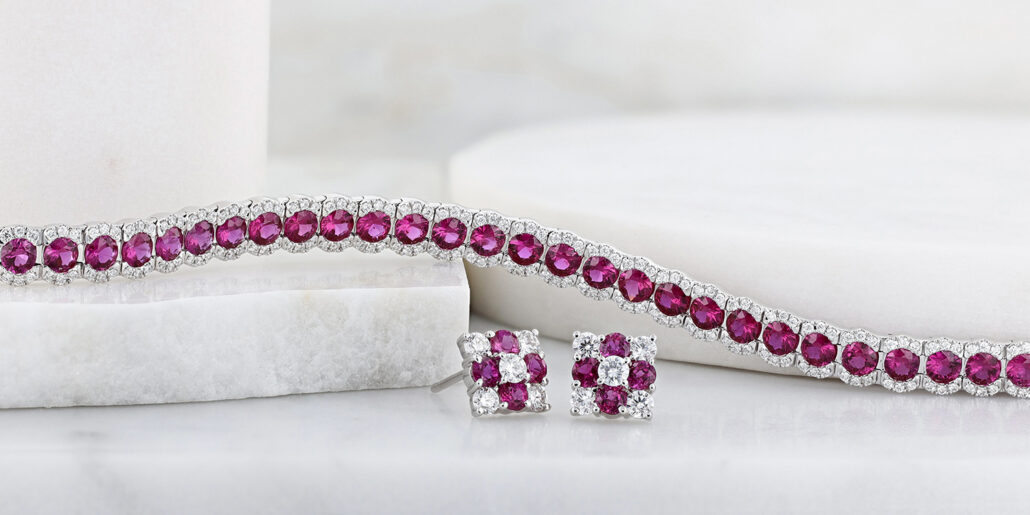July Birthstone Quick Facts
Ruby Color: Ranges from purple-red to true red to orange-red
Ruby Mohs Hardness Scale Rating: 9
Ruby Symbolism & Meaning: Passion and prosperity
Ruby Zodiac Signs: Cancer and Leo
Other Recognitions: Traditional gift for the 40th wedding anniversary

What is Ruby?
The ruby’s name is derived from the Latin term, ruber, for red. Like its sister gem, sapphire, ruby belongs to the corundum family of crystals, and its color comes from chromium oxide. The host rocks of ruby are metamorphic, like marble and gneiss. However, rubies are typically mined from the sediment in rivers and streams in Siberia, Thailand, India, Myanmar, Sri Lanka, and Brazil. Ruby is separated through the washing of river gravel, sand, and soil, then concentrated and picked out by hand.
Synthetic rubies have been created to be identical to natural rubies in chemical, physical, and optical properties. Still, they can be recognized by their lack of natural inclusions and that they transmit shortwave ultraviolet light.
History of the Ruby
Rubies were traded along China’s Silk Road as early as 200 B.C. In Burma—a significant ruby source since at least 600 AD—warriors believed that rubies made them invincible in some cases implanting rubies into their skin to grant protection in battle. Ancient Hindus referred to the ruby as the “King of Gems” and believed they’d be reborn as emperors if they offered rubies to the god Krishna. After the original Burmese mines were depleted, the Mong Hsu region of Myanmar started producing rubies in the 1990s. They lacked the vibrant red hue of traditional Burmese Rubies but were treated with heat to improve saturation and transparency.
Though the ruby has a long history, it wasn’t recognized as a variety of corundum until 1800. Before that, red spinel, tourmaline, and garnet were also believed to be ruby. Even the Black Ruby, one of the famed crown jewels of England, was considered one of the largest cut rubies until determined to be spinel. One of the largest known rubies in the world is called the “Peace” ruby because it was found in 1919 shortly after World War I ended. The red fluorescence power of ruby helped build the first working laser in 1960. Rubies—both natural and synthetic—are still used to make lasers, as well as watches and medical instruments.

Ruby Color, Characteristics, and Value
A fiery statement piece, July’s birthstone is the perfect complement to the rising temperatures. Symbolic of passion and prosperity, rubies have been prized for centuries by jewelry buyers and makers alike. One of our favorite makers, Roberto Coin, even adds a small hidden ruby to the inside of their pieces to promote long life, health, and happiness.
Ruby is the hardest mineral after diamond and can range in color from purplish-red to true red to orange-red. The most desirable color is pure red with a hint of blue. Garnet can be mistaken for ruby. However, garnet generally has a darker tone and is less refractive. Most rubies have been heat-treated to enhance their color at the time they were mined; this is a permanent treatment and does not require special care.
While rubies can be cut into almost any shape, large stones are rare. Inclusions are common with rubies and can indicate the geographical source of the gem. Rutile needles are a natural inclusion that creates a unique cat’s eye effect on a cabochon. When crystal inclusions are oriented in a specific pattern, a six-pointed star (called an asterism) becomes visible — making the gem a “Star Ruby.”
When considering the value of a ruby, color is the principal factor. Inclusions that cannot be seen with the naked eye also indicate higher quality. Rubies in sizes over two carats are rare. They can be more expensive than a diamond of comparable size.
Ruby Care & Cleaning
Ruby is a durable gemstone that can easily handle daily wear. Although there are no special precautions to take with this gemstone, keep in mind that all gems will scratch and abrade if they are not taken care of properly. Clean with a gentle solution made specifically for jewelry. Borsheims also offers small “ultrasonic” cleaners that clean your jewelry with high-frequency sound. It is crucial to have your jewelry professionally cleaned and checked three to four times a year. When not worn, ruby jewelry should be stored in a jewelry box lined with soft fabric.
Ruby Jewelry & Gift Ideas
Whether you are shopping for yourself or someone else, Borsheims has an extensive selection of ruby jewelry in various styles. Sapphire is a popular gift option for those celebrating July birthdays and those commemorating their 40th wedding anniversary. If you need help picking out the perfect piece of ruby jewelry, one of our experts would be happy to assist you. Stop into our store or text or call 402.391.0400 during store hours to speak with one of our friendly and knowledgeable sales associates.

